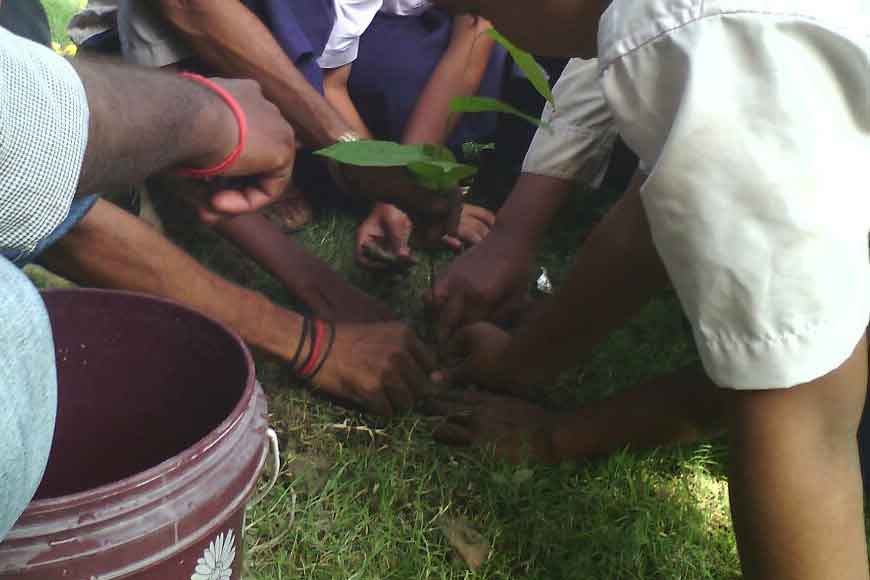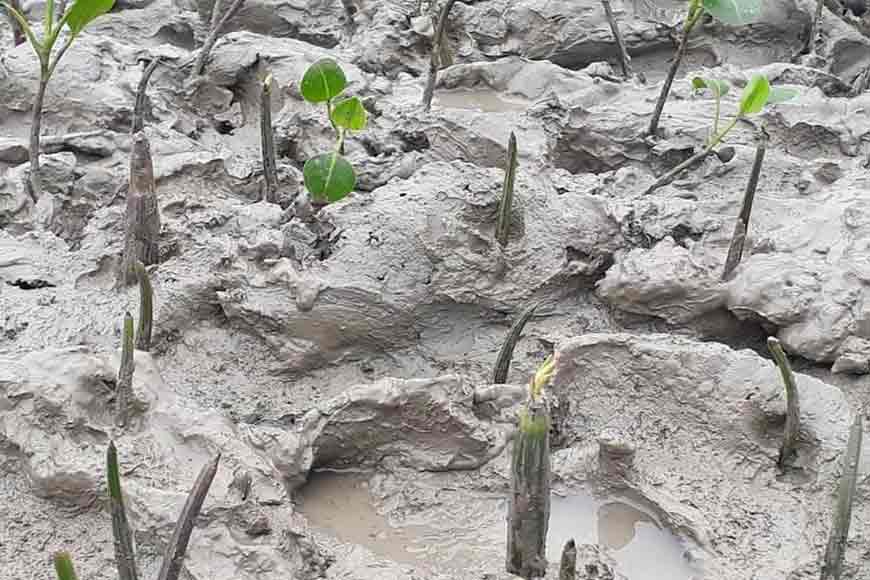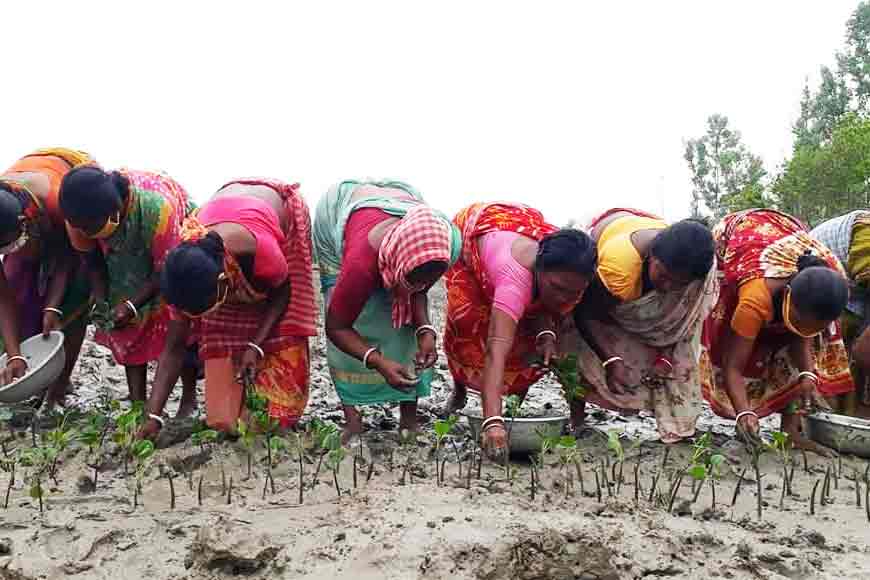West Bengal Government executes massive Mangrove Plantation in Sundarbans

Last year on May 20, super cyclone Amphan struck West Bengal’s shores and left a trail of destruction in several areas of south Bengal including Kolkata, which was completely devastated. The destruction, unprecedented in recent public memory, resulted in thousands of houses being damaged, low-lying areas being inundated and crops over thousands of acres being destroyed. The routine was repeated this year when cyclone Yaas hit again. It coincided with the perigean spring tide and the resulting storm surge battered the three coastal districts in Bengal and the Sundarbans. What partly saved was the Mangroves.
A total of 4,652 hectares of land has reportedly been earmarked for the plantation this year. According to the state forest department, about 2.5 crore trees, both large and small, were destroyed in Sundarbans, during the flood and cyclones last year. The damage was particularly high in coastal and riverine areas.
The West Bengal Government, under the guidance of the Hon’ble CM Mamata Banerjee, formed a committee of scientists and environmentalists after the cyclone who submitted a report in March this year that corroborated the locals’ experience and confirmed that effect of cyclones could have been worse if the mangrove forests had not formed the first line of defence. The delta’s mangrove forests have historically protected the state from cyclones. But deforestation and climate change have taken a heavy toll. Mangrove forests, nature’s buffer against disasters, have faced the brunt of unregulated coastal development, shrinking of deltas and climate change linked to extreme events. The degrading health of mangroves affects their resilience and recovery potential against climate change consequences like sea-level rise.

In a bid to reduce the impact of cyclones and protecting the embankments from the waves that are triggered during cyclones, the South 24-Parganas district administration has finalized plans to plant 7.5 crores mangrove saplings in the current year. The district administration initiated the mangrove plantation drive in the cyclone-prone areas of the Sundarbans on July 26. Hon’ble Chief Minister, Mamata Banerjee, has also emphasized on mangrove plantation drive in the cyclone-prone areas of Sundarbans and along the embankments in the three coastal districts of the state.
A total of 4,652 hectares of land has reportedly been earmarked for the plantation this year. According to the state forest department, about 2.5 crore trees, both large and small, were destroyed in Sundarbans, during the flood and cyclones last year. The damage was particularly high in coastal and riverine areas. Last year too, the state forest department had planted crores of trees to compensate for the loss. Plantation will be initiated again in this area. The district administrations have also allotted 1,094 hectares of land for the plantation of saplings.
The mangrove plantation drive will generate income and local work force will be hired through a 100-day work project. More than 30 thousand families will be involved in the project. One lakh women have been roped in this scheme to plant crores of mangroves.

The district officials insist this plantation drive on a massive scale will provide an alternative source of income for the villagers who have lost everything in the cyclone or have returned to their villages from other states due to lack of employment. Steps have been taken to continue uninterrupted supply of saplings through nurseries during the plantation period that began in June. At the moment, 1 lakh 20 thousand saplings are being prepared in 88 mangrove nurseries. Once they are ready, the saplings will be planted in the 10 blocks in Sundarbans. Last year, five crore saplings were planted at the directive of the Chief Minister and 6.5 lakh mandays were created. This year, the drive would span around 800 km of coastline.
The delta’s mangrove forests have historically protected the state from cyclones. But deforestation and climate change have taken a heavy toll. Mangrove forests, nature’s buffer against disasters, have faced the brunt of unregulated coastal development, shrinking of deltas and climate change linked to extreme events.
The mangroves help hold back the strong blows of the high tidal waves. The river embankments are protected as the root of the mangroves grips the earth tight and that resists landslides. Besides, the mangrove is the only plant species which has the maximum capacity to inhale carbon dioxide. The suction capacity is found more in the mangrove leaves compared to the freshwater green leaves. Mangrove trees are the green soldiers who can defend us from disasters in the future.
Image Courtesy : Facebook










